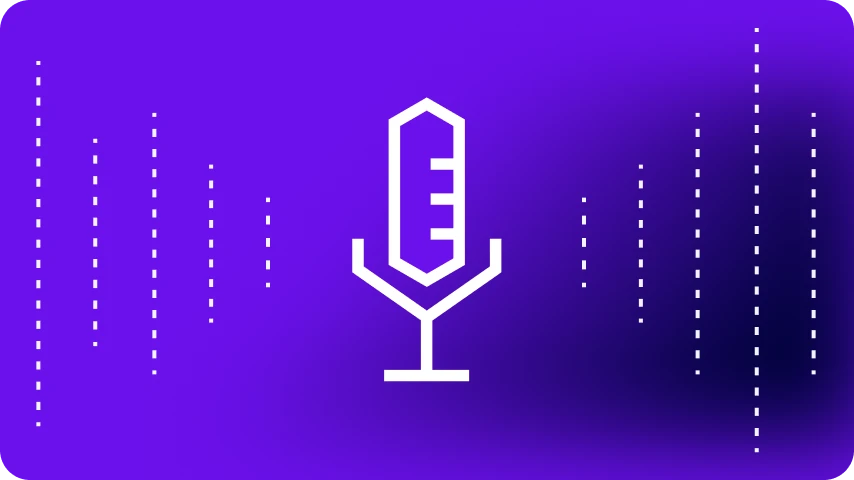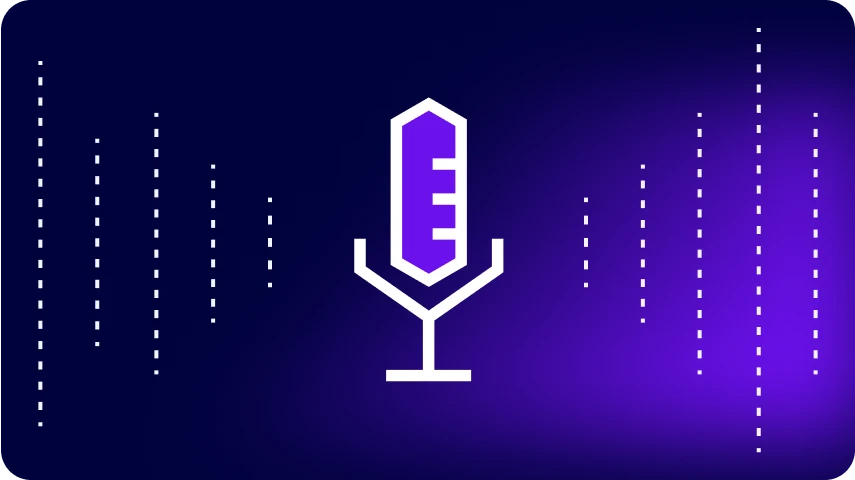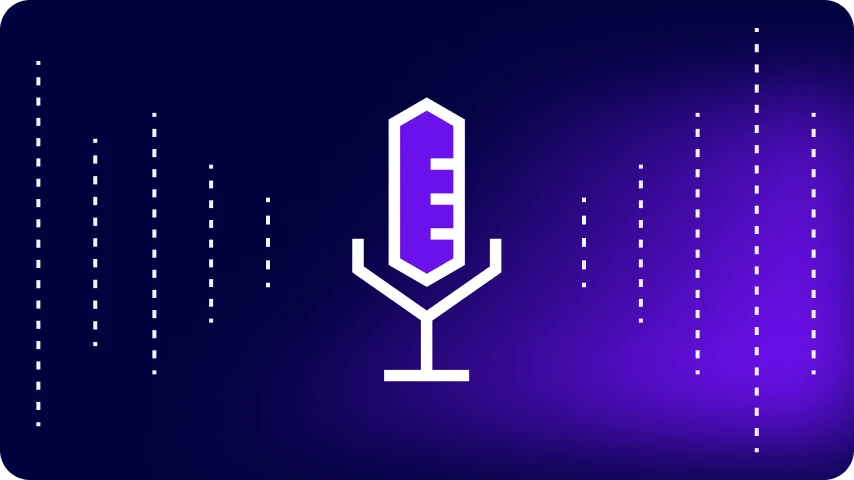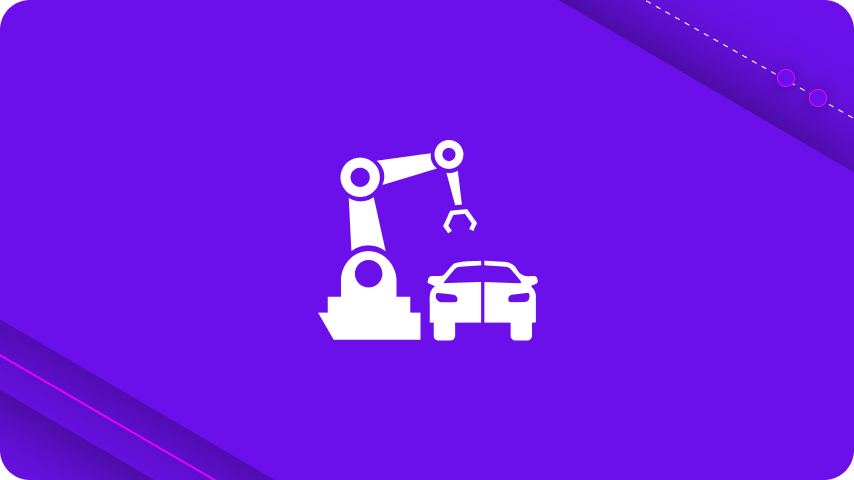
Qual é o Futuro da Integração? | Podcast Episódio 6



Digibee integra a nova plataforma de e-commerce do supermercado em menos de 30 dias, resultando em vendas online crescendo dez vezes.

Com anfitrião Cait Porte, Diretor de Marketing da Digibee
Neste episódio de “Integração. Redesenhado.”, nosso anfitrião, Diretor de Marketing da Digibee Cait Porte, é acompanhado pela gerente de sucesso do cliente Paula Arencibia, para uma discussão destacando a rápida velocidade das integrações com o iPaaS da Digibee e o modelo de entrega diferenciado. Paula mergulha em nosso abrangente programa de integração trifásico que capacita e capacita nossos clientes. Ela explica como a Digibee dá acesso a analistas funcionais, arquitetos de soluções, gerentes de sucesso de clientes e desenvolvedores, para que possamos permitir integrações mais rápidas e implementações bem-sucedidas – para projetos de qualquer escopo.
Mais sobre este assunto
CAIT PORTE:
Bem-vindos de volta, pessoal. Eu sou Cait Porte. Hoje estamos acompanhados por Paula Arencibia, da nossa equipe de sucesso do cliente, e estou muito animado por tê-la. Estávamos conversando sobre os diplomas dela que vemos ao fundo, se você está assistindo a gravação disso, mas estou muito animado para falar com você hoje.
O assunto é velocidade, e o mundo está realmente pronto para a velocidade com que podemos entregar aqui na Digibee? E acho que é um conselho muito interessante que certamente queremos dar ao grupo. Mas, Paula, sentada com nossos clientes, sabendo o que você sabe, seu conselho será extremamente valioso hoje. Então seja bem-vindo.
PAULA ARENCIBIA:
Obrigado. Obrigado.
CAIT PORTE:
Adoro que tenhamos um grupo tão diversificado de pessoas com quem conversamos aqui.
Então, Paula, acho que há algumas coisas que precisamos analisar antes de começarmos e responder à pergunta: o mundo está pronto? Então, por que você não me explica com que rapidez estamos falando aqui? Certo? Talvez fale um pouco sobre alguns exemplos que tivemos aqui na Digibee sobre velocidade e velocidade de integração e velocidade de implantação porque todos se preocupam com a rapidez com que você consegue realizar o trabalho, certo? Estamos todos tentando encontrar maneiras de realizar o trabalho com mais rapidez. Então, o que você acha?
PAULA ARENCIBIA:
Absolutamente. Bom, então o prazo médio de entrega de um projeto de integração com o Digibee é de cerca de 90 dias. Mas já vi integrações sendo entregues em até três semanas. Depois que tivermos o que precisamos pronto, será muito rápido colocar nossas integrações no ar. E então eu acho que, comparado ao seu projeto de integração tradicional real, que normalmente leva de seis a nove meses, isso é uma grande conquista para a Digibee.
CAIT PORTE:
Quero dizer, a marca dos 90 dias é enorme. Acabei de contratar um monte de gente – contratamos um monte de gente aqui na Digibee nos últimos seis meses – acho que mais de 100 neste momento. E é nessa marca de 90 dias que você se sente perigoso. Então o fato de conseguirmos atrair clientes para a plataforma, integrando integrações completas nessa janela de 90 dias é realmente um feito que acho que não estamos vendo em muitos outros lugares do mercado.
Quando você pensa no modelo de entrega que temos – e internamente certamente pensamos que temos um modelo de entrega diferenciado, e é uma das coisas sobre as quais falamos – mas quando você pensa que isso é um diferencial, como você está implementando que? Então, podemos explicar qual abordagem adotamos com os clientes para que eles possam ter aquele cronograma de sucesso de que acabamos de falar?
PAULA ARENCIBIA:
Sim. Então, acho que duas coisas das quais tenho muito orgulho de falar são a rapidez com que entregamos e como entregamos. Certo. Como você está dizendo, temos uma metodologia própria para entregar nossos projetos. Então, acho que o que realmente afeta a velocidade do tempo aqui, como eu disse, é a tecnologia que a gente usa, que tenho certeza que tem muita gente falando sobre como a gente é low code, arrastar e soltar e como é rápido integrar seus desenvolvedores. Essas coisas são incríveis, mas também a metodologia. Certo?
Então, como normalmente trabalhamos depois de integrar o cliente? Todos os nossos clientes passam por mais ou menos três etapas com o Digibee. Então, a primeira etapa é o que chamamos de primeiro impacto. E é aí que o cliente está apenas iniciando seu relacionamento com a Digibee. Nos reunimos e queremos mostrar o impacto que a Digibee pode causar na sua empresa. Então vamos desenhar, escolher um projeto para integrar.
Deixaremos tudo o que precisamos pronto e no lugar. Nós construiremos para você. Mostraremos como o construímos e por que o construímos dessa maneira. Portanto, você não está no escuro sobre como construímos as coisas e por que as construímos dessa maneira. E então colocaremos no ar, certo?
E então, uma vez que o colocamos no ar, a definição de um projeto ativo para a Digibee é um pouco diferente da sua empresa normal. Certo? Então, para nós, estar ao vivo não é apenas mudar o seu pipelines para produção, mas também é ter o cliente confortável com a plataforma e os princípios básicos da plataforma sobre como operamos, olhando alguns logs, sabendo como mantê-los pipelines que vão para a produção do seu primeiro projeto, e também definir os próximos passos. Certo? Então esses três componentes, colocando seu pipelines na produção, saber como operar o básico da plataforma e ter nossos próximos passos definidos, essa é a primeira fase do que chamamos de colocar seu projeto no ar. Isso é o que chamamos de seu primeiro impacto.
Agora, a segunda fase seria junto, certo? Então é aqui que você já conhece as capacidades do Digibee. Você já viu como a Digibee pode impactar o seu negócio. E é assim que começamos a trabalhar juntos em um segundo ou terceiro projeto. Nesta fase, o que queremos fazer é mostrar todos os recursos que a Digibee tem a oferecer para capacitar sua equipe para começar a usar a plataforma por conta própria. Certo? Então, falamos sobre Digibee Academy, falamos sobre nossos workshops, falamos sobre sessões de desenvolvimento com nossas equipes e realmente colocamos a mão na massa junto com nossa equipe que entrega o projeto. Mostrando como a mágica acontece, certo? Mostrando como trabalhamos e como podemos realmente nos capacitar e ter um conhecimento um pouco mais profundo em Digibee.
E então, nossa terceira e última fase seria uma fase que chamamos de “você conseguiu”. Certo? Então, essa seria uma fase em que você já passou pelo seu primeiro impacto, você já construiu com a gente. E esta é a fase em que você se sente confortável o suficiente para começar a construir a si mesmo. Então você tem uma equipe ou uma pessoa ou, você sabe, um grupo que sabe como operar o Digibee. Eles poderiam até passar por nosso bootcamp de desenvolvimento, onde aprenderão as melhores práticas de arquitetura e nossa plataforma, e se sentirão realmente confiantes o suficiente para começar a lidar com os projetos por conta própria.
E é importante dizer que sua equipe de entrega, a equipe que cuida de você na Digibee, estará presente em cada etapa do processo. Certo? Não é porque você está na última milha e está desenvolvendo sozinho que você não tem acesso aos nossos arquitetos, que não tem acesso ao seu gerente de sucesso do cliente e aos seus analistas funcionais. Estamos lá para ajudá-lo de todas as maneiras, em cada etapa do caminho. Mas é muito importante para nós medirmos nosso sucesso pela forma como nossos clientes estão adotando a plataforma e realmente conhecendo as capacidades do que temos para oferecer.
CAIT PORTE:
Quando estava pensando nisso, tentei dizer, ok, para o público, o que isso realmente significa? E acho que a melhor coisa que podemos comparar é talvez o treinamento pessoal ou a preparação física.
Assim, todos podem se inscrever na academia. Todos podem obter uma plataforma de integração. Há um milhão deles por aí. Certo? Escolhemos todos eles por diferentes razões. Mas os que são mais bem-sucedidos, os programas que você executa e que são mais bem-sucedidos quando você está tentando melhorar seu regime de exercícios físicos, entrar em forma, seja o que for, voltar à forma, talvez apenas continuar, são quando temos parceiros de responsabilização. E então acho que o Digibee pode atuar como aquele personal trainer, certo? “Ah, acabei de chegar à academia pela primeira vez e não sei realmente o que estou fazendo aqui.” E alguém orienta você e diz: “ok, bem, temos esta oferta e podemos orientá-lo”.
Mas, sua equipe atua como um personal trainer para garantir que toda a equipe saiba usar a academia, a academia Digibee, se quisermos pensar dessa forma. E eu adoro aquele modelo em que trabalhamos para você, trabalhamos com você, e então estamos capacitando e capacitando você para usar aquela academia sozinho. E eu acho que é nisso que realmente nos inclinamos quando se trata de Digibee.
E ter tudo isso incluído é uma das coisas que acho que faz uma diferença real. Sua equipe faz parte da jornada aqui na Digibee, e nós realmente nos apoiamos nesse modelo de capacitação para nossos clientes. Então, eu adoro, para aqueles na plateia que estão ouvindo, dizer: “bem, o que isso realmente significa?” Bem, é como ter seu próprio personal trainer sem nenhum custo adicional. Acho que podemos escapar impunes. O que você acha?
PAULA ARENCIBIA:
Eu penso que sim. Essa é uma ótima analogia. Eu gosto disso.
CAIT PORTE:
Então, quando você pensa sobre isso, certo? Os próprios clientes enfrentam uma série de desafios, seja alinhar todos ou garantir que entendem o produto ou a plataforma. E o nosso modelo de entrega é realmente um diferencial na sua cabeça? E podemos já ter conversado sobre isso, mas estou curioso para saber se você está pensando que uma ou duas coisas surgem quando você pensa nos desafios que um cliente está enfrentando ou em como nos diferenciamos? Quais são algumas das coisas que você acha que, do ponto de vista do cliente, nos tornam melhores e diferentes?
PAULA ARENCIBIA:
Acho que a equipe que entrega suas integrações é extremamente capacitada. Eles já trabalham com a Digibee provavelmente há algum tempo e até mesmo nossos “Digibabies”, os novos que chegam e começam a trabalhar conosco, têm o conjunto de habilidades necessárias para ajudá-lo e capacitá-lo. Certo?
Então, normalmente o Squad trabalha com o Customer Success Manager que te ajuda a garantir que seu produto está sendo entregue, que tudo está acontecendo na hora que deveria, que os patrocinadores estão bem cientes de tudo o que está acontecendo no projeto e que engajamos todos .
E então você tem o seu analista funcional, que é o responsável por desenhar os diagramas de sequência e te ajudar a explorar o que você quer que aconteça nessa integração e definir as regras.
E então trazemos nossos incríveis desenvolvedores que, uma vez que especificamos tudo isso, eles vão e entregam e tornam tudo lindo.
E também nossos arquitetos de soluções. Quando falamos de uma integração um pouco mais complexa, quando falamos de escalabilidade, quando falamos de reutilização daqueles pipelines, certo? Trazemos esses personagens para a cena para ajudar você. Então, acho que a equipe que envolvemos ao usar a metodologia e implementar essa metodologia realmente faz uma grande diferença.
CAIT PORTE:
Acho que faz uma enorme diferença quando você tem as pessoas certas no lugar. Certo? Uma das coisas que falamos aqui é que queremos que a tecnologia e as plataformas funcionem para a empresa, e não o contrário. Não queremos que você tenha que ajustar a maneira como sua equipe trabalha para conseguir isso.
Acho que a velocidade é muito importante porque quando percebemos que há um problema – seja no trabalho, na escola ou em casa – não queremos que esse problema seja resolvido imediatamente. Não queremos ter que esperar seis, nove meses como você mencionou no início. E eu acho que a velocidade com que você pode realmente reagir e o fato de termos essa infraestrutura configurada é realmente o que… se você olhar para o mercado, não há realmente nada lá fora hoje que possa fazer isso. É claro que existe uma ótima tecnologia por aí, mas quando você pensa no custo associado para obter a velocidade que você procura… Você sabe, algumas pessoas chamam isso de jogar dinheiro no problema. Certo? Agora, se você é rico o suficiente para ter, é isso. Claro, vá em frente, invista seu dinheiro nesse problema. Mas realmente queremos pensar em maneiras de torná-lo eficiente, seguro e rápido. Certo? E eu acho que é nisso que você e sua equipe entram e capacitam nossos clientes para realmente seguirem nessa jornada.
PAULA ARENCIBIA:
Deixe-me comentar sobre isso. Eu só queria dizer que nossa equipe entrega super rápido, mas nosso principal objetivo é garantir que sua equipe também entregue rápido. Porque apesar de entregarmos super rápido e trabalharmos em sprints, trabalhamos com uma metodologia incrível. Se você quer que construamos, você ainda depende de outra pessoa, certo? Portanto, nosso principal objetivo é capacitar sua equipe para que ninguém restrinja a rapidez com que você pode entregar. Certo?
CAIT PORTE:
Ponto chave aí. Queremos ter certeza de que estamos capacitando nossos clientes, permitindo que eles realizem seu trabalho. E esse é esse modelo, esse processo de três etapas sobre o qual você falou, ok, vamos causar o primeiro impacto, depois vamos fazer um juntos e depois vamos fazer com que você trabalhe por conta própria e chegue lá. Adoro essa analogia do bebê, certo? Aquele garoto crescendo e pronto para ir para a faculdade ou tirar um ano de folga ou o que quer que faça depois de se formar e estar pronto para seguir em frente.
Se você conseguisse fazer com que um cliente ideal entrasse, ele teria um projeto, ele teria um problema. Quais são as caixas ideais, talvez, se você as verificasse? Que você diria: “ei, este é um cliente que podemos entregar não em 90 dias, mas ainda antes, duas, três semanas?” Esses são os tempos de resposta que realmente procuramos.
Se estivéssemos conversando com clientes ou se os clientes estivessem ouvindo isso, o que você diria a eles sobre como eles podem se preparar ou qual é a sua situação ideal onde, ei, é isso que torna realmente fácil fazer as coisas acontecerem?
PAULA ARENCIBIA:
Acho que, pela minha experiência, os clientes que podemos entregar mais rapidamente são aqueles que estão verdadeiramente engajados. Tipo, eles querem ver essa integração acontecer. Então, porque eles estão realmente engajados e entusiasmados, eles querem aprender, eles mergulham fundo. Temos muitas ferramentas que usamos para gerenciar nossos projetos para garantir que estamos mantendo a comunicação fluindo e funcionando.
Mas, quando a gente chega e traz para a mesa, “ei, precisamos…” (não sei, vou dar um exemplo). “Precisamos das chaves de API para acessar seu sistema, ou precisamos conhecer e conversar com alguém que saiba como operar seu sistema”, para que possamos ter algumas ideias sobre como obter os dados e como entregá-los. Por exemplo, quando eles conseguem trazer essas pessoas para a mesa e nos dar os recursos de que precisamos para entregar essa integração rapidamente, as coisas se tornam muito mais fluidas. Então, para mim, se eu pudesse escolher uma palavra. É o quão engajado o cliente está que realmente impacta o tempo de entrega da integração e o quanto ele está ansioso para aprender e começar a embarcar nesta jornada na Digibee.
CAIT PORTE:
Adoro isso, aceitaremos um cliente ansioso a qualquer dia. Muitas analogias aqui hoje. Quer dizer, acho que estamos buscando velocidade, entrega, garantia, mas acho que onde o produto é provavelmente o cérebro da nossa organização, o sucesso do cliente é o coração. Você está se certificando de que o sangue está bombeando, que as coisas estão funcionando, que está indo e vindo e que todos esses órgãos estão sendo cuidados. E acredito e confio plenamente em tudo em sua equipe e no que ouvimos dos clientes continuamente. Quer dizer, acabamos de ouvir isso de uma das grandes marcas aqui nos EUA. E acho que você e sua equipe fazem a diferença e o fato de estarmos nessa jornada com eles faz uma grande diferença. Então, obrigado por todo o seu trabalho porque ele não passa despercebido, mas certamente é a força vital que nos move.
PAULA ARENCIBIA:
Absolutamente. E acho que nossa equipe é super apaixonada por ver nossos clientes realizando seus sonhos, ver seus sonhos se tornando realidade, ver seus sistemas se conectando. Oh meu Deus, não posso dizer o quanto fico feliz quando entrego uma integração e meus clientes dizem: “ei, você não tem ideia de quanto custo acabamos de cortar” ou “você não tem ideia de quanta mão de obra” ou “a carga de trabalho que foi retirada dos ombros da minha equipe.” É realmente fantástico e é isso que nos move.
CAIT PORTE:
É incrível. E adoramos todo esse feedback e tenho certeza que contaremos essas histórias em episódios futuros. Mas Paula, muito obrigado por participar. Definitivamente, pretendo ter você no podcast novamente.
PAULA ARENCIBIA:
Tudo bem, muito obrigado por me receber e vejo vocês em breve.

Uma visão geral do que você pode esperar de uma demonstração com nossa equipe. Quando têm a chance de mostrar nosso valor potencial, a maioria das organizações escolhe fazer parceria conosco.
Você concorda com essas afirmações?
Para economizar seu tempo e mostrar melhor como a Digibee pode acelerar sua estratégia de integração, saiba mais sobre o que você pode esperar da nossa equipe de vendas e arquitetos de soluções enquanto você explora o Digibee, incluindo:
Saiba mais sobre nosso processo de engajamento com este visão geral útil or agende uma demonstração com nossa equipe.

O CTO de campo da Digibee discute as lições aprendidas ao longo de sua jornada de TI, bem como o valor e os desafios da estratégia de transformação digital versus execução.

A Digibee automatiza rapidamente o processo de pedidos de laboratório para um líder no setor de medicina diagnóstica e ajuda na integração bem-sucedida com hospitais parceiros.

A Digibee permite que uma fintech venda um novo produto de seguro em seu novo aplicativo móvel com uma implementação em pouco menos de 45 dias.

O CEO e CTO fundadores discutem os valores centrais exclusivamente elaborados da Digibee e como eles são um verdadeiro reflexo do que é importante – as pessoas.

A integração empresarial não é mais um “luxo” – garantir que seus dados e sistemas estejam integrados de forma contínua e segura é vital para o seu crescimento e competitividade no mundo digital de hoje. Mas a que custo?
A produtividade dos desenvolvedores é um KPI cada vez mais importante para as organizações que buscam controlar os custos de TI sem afetar o crescimento ou a inovação. E, à medida que mais empresas se concentram em garantir que estão aproveitando ao máximo o departamento de TI, mais atenção está sendo dada à forma como a eficiência dos desenvolvedores é medida.
FAÇA
NÃO FAÇA
>> Agende uma demonstração personalizada com nossa equipe de especialistas e veja como o iPaaS da Digibee trará eficiência ao seu negócio.
Se as métricas de produtividade dos desenvolvedores estão ligadas aos resultados de negócios, será necessário identificar os objetivos do seu projeto de integração (ou projetos) para entender como sua equipe está se saindo.
Os principais objetivos da integração empresarial incluem:
Sem uma implementação bem-sucedida da integração, as empresas podem enfrentar:
A conquista de objetivos críticos – ou a eliminação de desafios – oferece uma forma valiosa de ligar a eficiência dos desenvolvedores aos resultados de negócios. E, uma vez que você tenha medido a produtividade de sua equipe de TI, pode começar a procurar maneiras de melhorá-la.

A interface visual intuitiva de arrastar e soltar da plataforma iPaaS da Digibee reduz o tempo e o nível de habilidade dos desenvolvedores necessários para construir integrações, enquanto nossa funcionalidade de monitoramento embarcada torna a manutenção dessas integrações mais fácil e eficiente. No relatório Forrester Total Economic Impact™ do iPaaS da Digibee1 , os analistas quantificaram como as empresas podem aumentar a produtividade dos desenvolvedores com a Digibee.
O relatório TEI da Forrester avalia as eficiências dos desenvolvedores realizadas na construção de integrações em US$ 2.1 milhões em três anos2, observando que a plataforma Digibee capacita os desenvolvedores a criar novas integrações com até 75% mais eficiência do que soluções ponto a ponto.
Os analistas da Forrester estimam o valor das eficiências do desenvolvedor de manutenção de integração em US$ 370,0003, observando que o Digibee elimina quase completamente a necessidade de retrabalho do desenvolvedor – um feito notável, visto que 98% dos profissionais de TI corporativos relataram que tiveram que reconstruir pelo menos uma integração nos últimos 12 meses.
A plataforma low-code da Digibee e suas ferramentas de monitoramento de integrações podem reduzir significativamente o tempo que sua equipe de desenvolvimento gasta com tarefas manuais relacionadas à construção e manutenção de integrações empresariais.
A maior eficiência dos desenvolvedores que sua equipe alcançará usando nossa iPaaS se traduz diretamente em progresso em objetivos-chave, como redução de custos, maior agilidade, aumento na velocidade de lançamento no mercado e a capacidade de adotar novas tecnologias que apoiam a inovação e o crescimento.
Mas você não precisa apenas confiar na nossa palavra. Baixe sua cópia do Relatório TEI da Forrester para uma visão mais detalhada de todos os benefícios que sua organização pode obter ao fazer parceria com a Digibee – ou agende uma demonstração sem compromisso para ver nossa solução em ação.
1 Um estudo encomendado conduzido pela Forrester Consulting em nome da Digibee
2 Economia para uma empresa hipotética com 20,000 funcionários e receita anual de US$ 5 bilhões
3 Economia em 3 anos para uma empresa hipotética com 20,000 funcionários e receita anual de US$ 5 bilhões

Os cofundadores da Digibee discutem a importância da integração e como ela é crítica para o sucesso final das empresas na era digital atual.

Os cofundadores compartilham a história inicial da Digibee, incluindo a descoberta da necessidade das empresas de conectar melhor seus sistemas e a construção de nossa solução eiPaaS.

Grande fabricante de automóveis usa Digibee para integrar seu sistema de gerenciamento de armazém herdado ao novo sistema de roteamento SaaS com tempo de inatividade zero.
X